“It is helpful to have new people at a Seder. It reminds us to explain things and to be more thoughtful in what we are doing.” ~Natalie Katz, my hostess for Passover Seder
As a Mormon, I honor those of the Jewish faith. I admire their history and the tenements of their faith: family, community, and honoring God above all else. I have wanted to attend a Passover Seder and was given the opportunity when Natalie Katz, a fellow member of the Philadelphia Interfaith Visionary Women’s Council, invited me to come to her home to experience the first night of Passover Seder. As I accepted her invitation on behalf of myself and my daughter, Natalie patiently answered my questions.
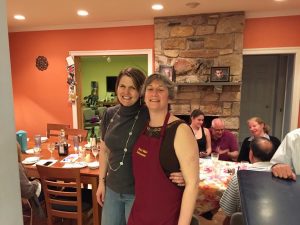
Me and Natalie in her kitchen. I had so much fun!
What should we wear?
Whatever you feel comfortable in.
We don’t drink alcohol, will that be a problem?
Not at all, grape juice will be there as well; it, too, is a “fruit of the vine.”
What can I bring? (This is a Mormon cultural thing, we don’t attend anything without bringing food!)
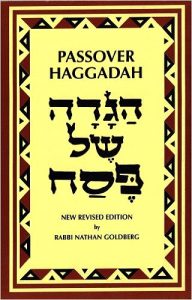
Haggadah Booklet
Would you bring fruit salad?
Are there specific rules I need to know about preparing the fruit salad? (I was panicking that perhaps I would offend if I brought something inappropriate! Do Jewish people eat pineapple?!?)
Any fruit should be fine, my son is a vegan, so just be aware of that.
My daughter and I were greeted warmly with hugs and introductions to everyone gathered there. The Jewish-Catholic neighbors were there with their Jewish observing son and daughter; the Catholic neighbor was there with his young grandson, Mason; Jewish cousin Ken; Natalie’s husband, Steve, and daughter, Leila, (her vegan son was still working). It was a full house with all of us. We rearranged the two tables so everyone could be together and the Passover began.
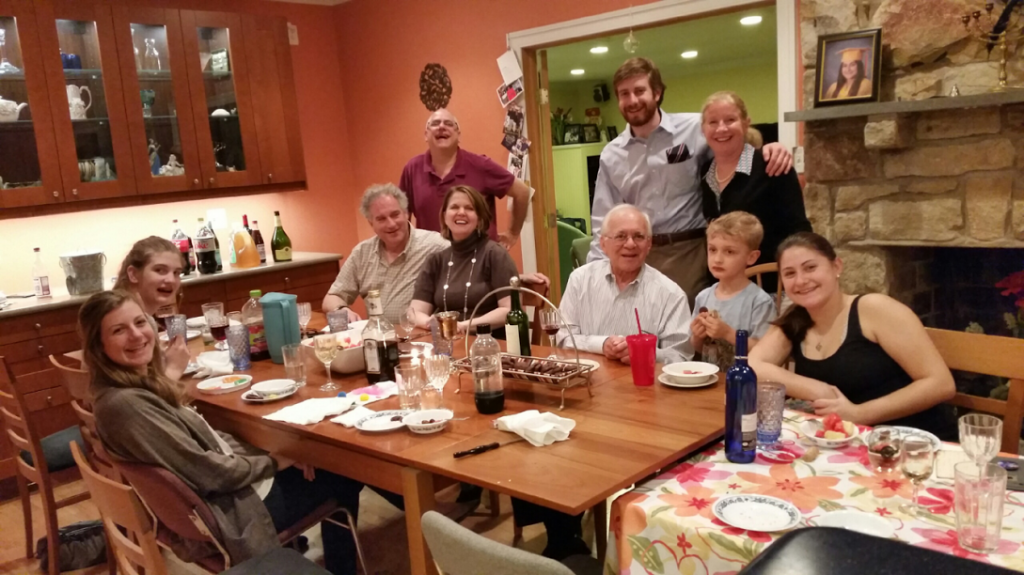
The whole group: Jews, Mormons, and Catholics.
Haggadah books were passed to each of us. Natalie’s husband, Steve, explained that Haggadah means ‘Order’ in Hebrew. These books are like Passover how-to manuals, telling us the order of the celebration. Steve read aloud the first page explaining each part of the Seder Plate, as Natalie rushed back and forth to the kitchen to grab anything forgotten.
Seder Plate:
Matzah: special crackers placed on a plate and covered with a napkin. Matzah is eaten to remind us how their ancestors had to leave Egypt in such haste that the bread dough for their bread did not have time to rise.
Beitzah: roasted egg: a symbol of mourning (as eggs are the first thing served to mourners after a funeral), evoking the idea of mourning over the destruction of the Temple.
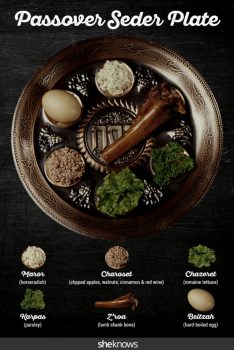
Seder Plate
Z’roa: a roasted bone: to recall the lamb their ancestors sacrificed. During the tenth plague, Adonai (God, the Creator) “passed over” the homes of the Israelites and spared their firstborn.
Maror: horseradish: a large piece. Bitter to remind them of the bitterness of slavery.
Karpas: parsley: which is dipped into salt water. The dipping of a simple vegetable into salt water, and the resulting dripping of water off of said vegetables visually represents tears and is a symbolic reminder of the pain felt by the Hebrew slaves in Egypt.
Charoset: Mixture of apples, pears, walnuts and wine (With a smaller dish of grape juice version thoughtfully prepared for the Mormons present!) This represents the mortar or clay used by their ancestors in slavery to build Egyptian monuments.
Chazeret: Bitter Herbs (A small bowl of grated horseradish, although it was explained another bitter herb could have been used in place of this.) symbolizing the bitterness and harshness of the slavery the Hebrews endured in Egypt.
I had imagined a very formal and stiff affair; however, I was surprised to learn that Passover is actually designed to be for children. The symbolism is explained thoroughly throughout the very long meal so that everyone understands. Whenever I had a question, several people jumped in to answer—lots of laughter and lots of detailed explanations. This was a group that knew their Jewish history!
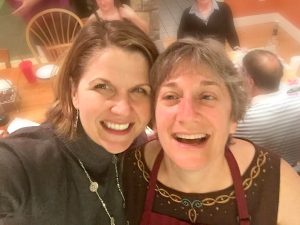
It was wonderful to learn more about such an important part of Jewish history.
The Passover Seder asks and answers the question, “What makes this night different from all other nights?” The answer is the story of the Jewish people: how the Israelites defied Pharaoh and fled toward freedom.
Every aspect of this celebration is designed to remind those celebrating of this pivotal and defining event in their people’s history, from the bitter herbs to remind them of how bitter the Egyptians made the lives of their ancestors to the salt water to remind them of the tears shed by their ancestors in the bondage of slavery.
Each page of the Haggadah booklet was written first in Hebrew, then phonetically spelled out (for those of us who are not Hebrew readers), then written in English. Steve read aloud the Hebrew, often with others reading along with him, then everyone would read aloud the English portions.
There were even parts of the Passover, or Pesach, where everyone sang! I felt a little bashful until I caught Ken’s eye across the table and he nodded encouragingly at me, so I quietly attempted to sing the unfamiliar tunes in Hebrew. Thankfully, the tunes were simple and repetitive, so that by the end of the meal, I felt as though I had fully participated.
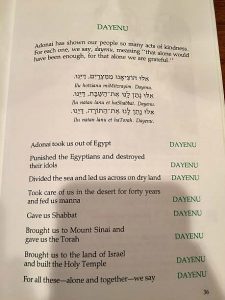
I took this picture to remind me of the patient teaching that happens during Passover Seder—reminders of Jewish history and the goodness of God.
I especially loved the song when thanks is given for the many acts of kindness shown by God the Creator, Adonai. I snapped a quick picture on my phone of the page. Although not a good picture, it shows the patient teaching that happens during Passover Seder—reminders of Jewish history and the goodness of God.
Prior to this night, I had only known Natalie, and that friendship was still in its early stages! However, as we sang this page together, there was a feeling of joyful oneness. All of the differing faith traditions: Jewish, Catholic, Mormon, or some unique combination not yet defined, came together in respect and gratitude for the miracles we’ve each experienced in our own lives. We sang of God’s goodness. We sang, some of us brokenly and out-of-tune, together, united in this warm moment of community.
We laughed together at Mason’s antics, he jumped and contorted his body in increasingly difficult spins to win our applause and compliments. We talked together about the need for differing faiths to come together more often in these moments of respectful sharing. We passed the jellied candies, the grape juice and wine, and we learned about each other.
Thank you so much Natalie for opening your home and heart to this Mormon! I learned so much and I look forward to returning the favor … perhaps an invitation to one of our family home evenings?
By: Elizabeth Latey
About Elizabeth Latey
Twitter •

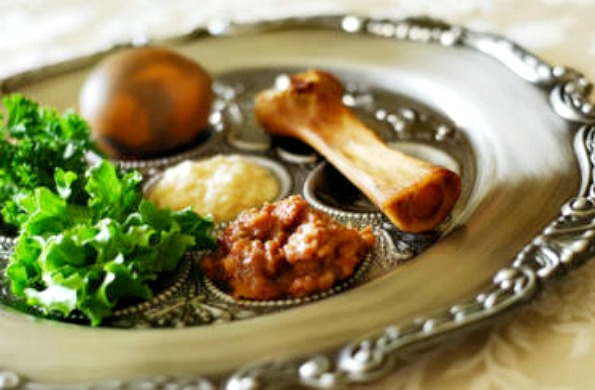


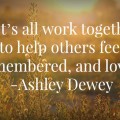


This was so wonderful to read. Thank you for sharing.